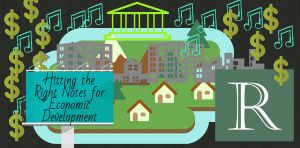The ABCs of Economic Development: It’s Easy as 1,2,3….
The Jackson Five number one hit in 1970 was the song “ABC,” knocking The Beatles hit “Let It Be” off the top of the Billboard Hot 100. Draft the proper economic development agreement and you can be in the Hot 100.
So, as the lyrics go,
You went to school to learn, girl,
Things you never, never knew before…
Economic development can be more than just new investment: it can be economic reinvestment that yields new tax dollars; it can be economic retention that retains existing tax dollars; it can be economic mitigation that identifies lost tax dollars that are not being reported and rendered properly; and, it can even be economic redirection through the use of creative land use regulations. In other words, economic development is not just a city’s ability to attract that new big box retail store or restaurant chain, but it is also a city’s ability to rejuvenate its existing tax base and direct its (re)development.
The Texas Community Development Act of 1975, also known as Chapter 373, is broad in its scope as residential, commercial, industrial, and community facilities are all on the table for redevelopment. Moreover, the city’s ability to provide aid and participate in the redevelopment process is also broad and sweeping in that a city may partner with public, private, for-profit, and not-for-profit entities to achieve community redevelopment goals.
First, a city is required to formally adopt a community development program, which is the power that allows a city to do what it desires to do within the framework of the chapter. The statute requires the city to identify blighted areas in need of redevelopment. The law provides that the city must conduct “public hearings” regarding the community redevelopment program. It specifically requires that two public hearings must occur before the 15th day before the date of its final adoption by the city council.
Extraterritorial development agreements under Texas Local Government Code Section 212.172 attract new residential development through public-private cooperation. To be a Top 100 hit, ensure that the city’s subdivision and sign ordinances are current. Discuss exactions with the developer early. Take advantage to draft in favor of the city municipal utility district consent conditions. Anticipate commercial development through a strategic partnership agreement to collect sales tax.
For commercial and retail economic development and retention, use Chapter 380 agreements for revenue, performance, and reimbursement incentives. Local Government Code Chapter 380 offers perhaps the most versatile of all modern economic development tools. Its beauty lies in its simplicity and its brevity. Consisting of only three sections, Chapter 380 affords municipalities great latitude to make loans or grants of public money or to provide city staff, facilities, or services at below market value or at no cost at all.
Another economic development mechanism is the use of Direct Tax Permits and Payments. This is a great tool for revenue raising when a sale occurs in one municipality for use in another municipality; the purchaser can then apportion the sales and use taxes appropriately between the two. This requires that the purchaser obtain a direct payment exemption permit (if they qualify) which essentially makes the purchaser, rather than the seller, responsible for allocating the taxes.
These are but a few of the tools available for cities to use to stimulate development.
Back to ABCs:
Shake it, shake it, baby, come on now!
Shake it, shake it, baby, ooo oooh!
Shake it shake it, baby, huh!
One, two, three, baby, oo ooo!
ABC, baby, nah nah!
Do re mi, baby, huh!
That’s how easy (economic development) love can be.
For extra credit, click here.

